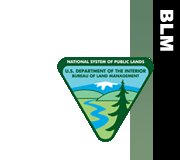|
Print Page | ||||||||||||||||||||||||
Mining Claims
General Mining Law of 1872The federal law governing locatable minerals is the General Mining Law of 1872 (May 10, 1872), which declared all valuable mineral deposits in land belonging to the United States to be free and open to exploration and purchase. This law provides citizens of the United States the opportunity to explore for, discover, and purchase certain valuable mineral deposits on public domain minerals. Federal Land Policy & Management Act of 1976 (FLPMA)This Act did not amend the 1872 law, but did affect the recordation and maintenance of claims. Persons holding existing claims were required to record their claims with BLM by October 1979, and all new claims were required to be recorded with BLM. FLPMA’s purpose was to provide BLM with information on the locations and number of unpatented mining claims, mill sites, and tunnel sites to determine the names and addresses of current owners, and to remove any cloud of title on abandoned claims. What is a Mining Claim?A mining claim is a parcel of land for which the claimant has asserted a right of possession and the right to develop and extract a discovered, valuable, mineral deposit. This right does not include exclusive surface rights (see Public Law 84-167). Locatable minerals include both metallic minerals (gold, silver, lead, etc.) and nonmetallic minerals (fluorspar, asbestos, mica, etc.). It is nearly impossible to list all locatable minerals because of the complex legal requirements for discovery. |
|||||||||||||||||||||||||






